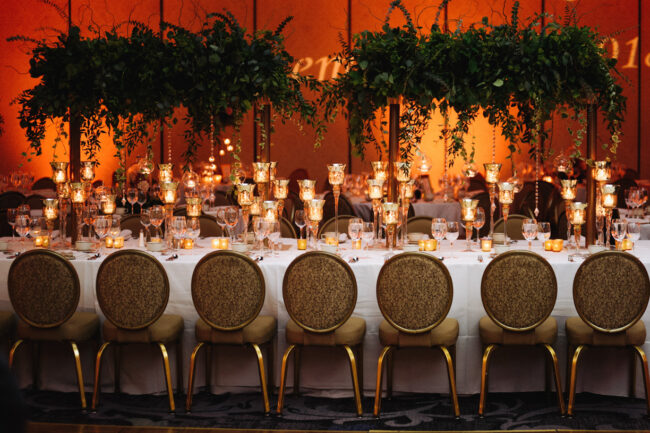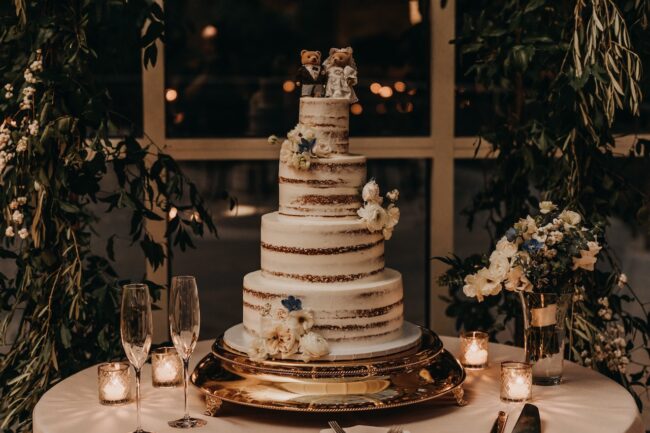Welcome to the ultimate destination wedding budget breakdown guide, where we unravel the secrets to crafting a remarkable celebration without breaking the bank. Planning a destination wedding does not have to be costly if you know the hacks right. So here’s a breakdown of what a real destination wedding budget looks like for couples.

Venue: 40%
It comes as no surprise that the venue often commands the largest portion (close to 40%) of a couple’s wedding budget. Prime locations, luxury hotels, historic mansions, and royal vineyards, tend to command higher prices.
Catering: 29%
Catering typically ranks as the second largest expenditure, following the venue. The cost of catering can depend on the number of guests, the style of service (buffet, plated, or family-style), the menu selection, and the geographical location. Upscale venues or specialty caterers usually charge higher prices.
Buffet or family-style services are more budget-friendly than plated meals since they require fewer servers. Additionally, food trucks are a very good, cost-effective alternative to traditional catering in weddings.
Band/DJ/Celebrity performances): 13-18%
Bands typically charge based on the length of their performance. Longer performance times will naturally incur higher costs. Some bands may offer additional services, such as providing background music during cocktail hours or breaks, performing special songs for the couple, or providing a DJ service alongside their live performance. These additional services may come at an extra cost.
Wedding Ring: 9%
Determine how much you are comfortable allocating toward wedding rings within your overall wedding budget. Apart from engagement rings (which are extra), wedding rings take up a bigger portion of the budget after entertainment.
Photographers: 9%
Photographers’ fees depend on experience, reputation, equipment, and the services they offer. Request quotes from multiple photographers to get a sense of the average price range in your area.
Consider what you need and want from your wedding photography. Do you want full-day coverage or just a few hours? Do you want a second photographer or additional prints and albums? Consider whether you would like to have engagement or pre-wedding photo sessions. Same-day edits/delivery also come at extra charges.

Alcohol/liquor: 8%
Decide on the type and quantity of alcohol & the kind of bar (open bar, cash bar, or combination) you want to offer at your wedding. The number of guests you expect to attend your wedding will play a significant role in determining your alcohol budget.
Calculate the approximate number of drinks per guest based on the duration of the event and the drinking habits of your guests. Some venues may require you to use their in-house bar service or have limitations on what types of alcohol can be served.
Flowers: 8%
Exotic or rare flowers typically come with a higher price tag compared to more common varieties. The availability of certain seasonal flowers can affect their cost. Flowers that are out of season or imported from distant locations may be more expensive due to transportation and supply chain costs.
Similarly, larger and more elaborate arrangements, such as centerpieces and ceremony installations, tend to be more expensive than smaller bouquets or boutonnieres.
Videography: 7%
Packages typically include different hours of coverage, multiple videographers, engagement sessions, albums, prints, and more. Determine how many hours of coverage you need, starting from pre-ceremony preparations to the end of the reception. Some photographers and videographers may offer add-on services, such as photo booths, drone footage, or same-day edits.
Wedding Attires: 7%
Designer dresses or custom-made gowns tend to be more expensive, while off-the-rack or sample-sale dresses can offer more budget-friendly options. The cost of the groom’s attire will depend on whether he chooses to rent or purchase a suit or tuxedo.
If you are responsible for covering the costs of your bridesmaids’ dresses or groomsmen’s suits, consider their budgets and select options that are within a reasonable price range. Lastly, don’t forget to budget for accessories such as veils, headpieces, shoes, jewelry, belts, and undergarments.
Wedding Planner: 5-6%
Only 5-6% of your entire budget will go towards this. Full-service planners provide comprehensive assistance from start to finish but will be one of the most indispensable parts of your wedding. Also, destination weddings or weddings with unique logistical challenges can incur higher costs due to the additional planning and coordination involved.
Event Rentals, Lighting & Decor: 6-9%
Linens, tableware, decorative items, and props, such as arches, arbors, centerpieces, signage, and lighting will take up another 6-9% of your budget.
Transportation: 3%
Couples often opt to hire transportation services like arranging buses or shuttles to transport guests to and from hotels. You may also opt for more costly options like a limousine for the wedding party or an elegant getaway car for a grand exit after the reception. It is recommended to allocate at least 3% of your wedding budget towards transportation expenses.
Stationery: 2%
From save-the-date cards to formal invitations, this stationery budget encompasses various items, including ceremony programs, menus, thank-you cards, and more. This will take up another 2% of your budget.
Cake: 1-2%
While certain venues may offer wedding cakes or other sweet treats as part of their packages, many couples opt to outsource the dessert aspect of their wedding. Wedding cakes/desserts take up 1-2% of the wedding budget.
Hair & Makeup: 1%
Allocate a minimum of 1% of your budget specifically for your hair and makeup expenses. Although it is not obligatory to cover the cost of hair and makeup services for your bridesmaids or other members of the wedding party, you must clearly discuss this with them and decide.
Wedding Favors/Gifts: 1%
You might have to give 1% of your budget to cover the costs of these items in case you’re planning an exit gift for your guests.
Officiant: 1%
Lastly, you will have to allocate approximately 1% of your budget to cover the expenses associated with securing an officiant who will solemnize your union and lead the ceremony.


